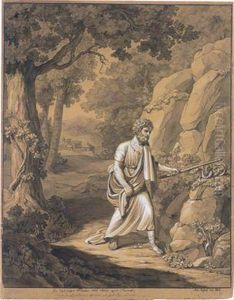Johann Nepomuk Hofel Paintings
Johann Nepomuk Höfel was an Austrian engraver and printer, known for his significant contributions to the graphic arts in the 19th century. Born on March 13, 1795, in Vienna, Austria, Höfel developed an interest in the arts at a young age. He pursued his education at the Academy of Fine Arts Vienna, where he honed his skills in engraving under the tutelage of skilled masters.
In the early years of his career, Höfel worked on a variety of projects, including book illustrations and currency design. His engravings were characterized by their meticulous detail and precision, which garnered him a reputation as one of the finest engravers of his time. He was adept at both line engraving and stipple engraving, a technique that uses dots to create tonal effects.
Höfel's work often reflected the Biedermeier period, a time in Central Europe that emphasized simplicity and modesty in art, literature, and interior design, following the excesses of the Napoleonic Wars. His engravings captured the essence of this era, with a focus on domesticity, nature, and the middle class.
Throughout his career, Höfel contributed to the advancement of the graphic arts in Austria. He was appointed the director of the Imperial-Royal Copper Engraving Academy in 1826, a position he held until his retirement. This academy played a vital role in the education of future generations of artists and engravers.
Johann Nepomuk Höfel passed away on April 19, 1865, in Vienna. Although he may not be as widely recognized as some of his contemporaries, his work remains an important part of the history of Austrian art. His engravings continue to be appreciated for their technical skill and their depiction of early 19th-century Viennese culture.



